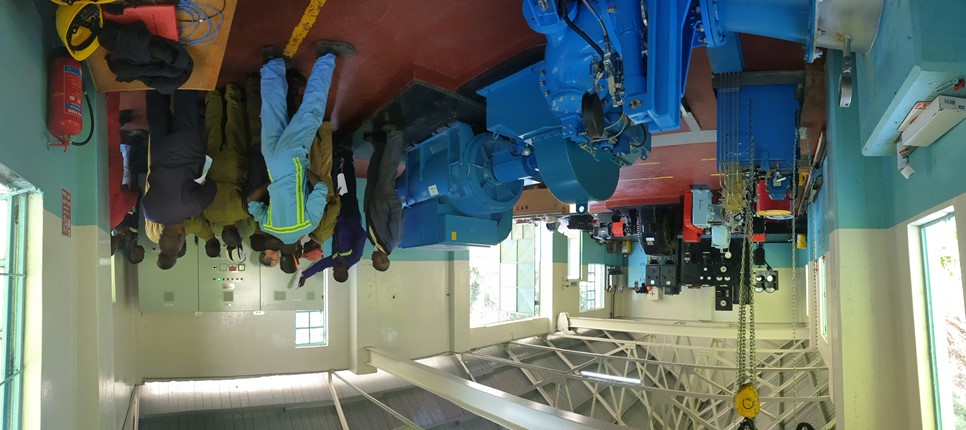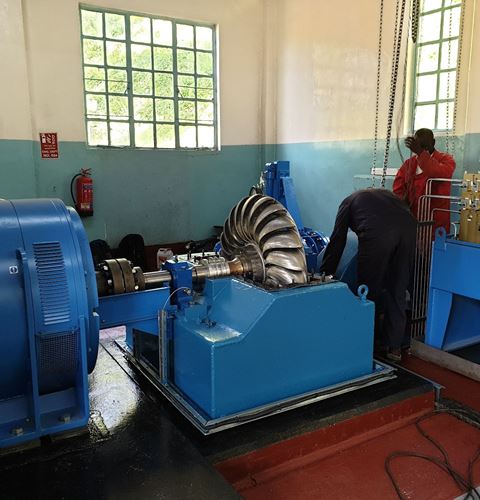Dimbolil Modernisation, Kericho, Kenya
Hydropower on Kericho Tea Estates
Finlays Tea Estates is in the highlands of Kericho, Kenya and covers 10,300 hectares, containing 4 tea factories. The Kericho estate is a thriving community of thousands of employees and their families, who live work and study there. There are 14 primary schools, 50 nursery schools and 2 secondary schools on the estate.
Hydropower has been used for power on the tea estate as far back as 1931 when Gilkes supplied the first turbines to the Saosa Hydro plant. Since then, 10 Gilkes turbines have been supplied to 5 separate hydro plants on the estate.
Dimbolil Machines
The Dimbolil Hydro plant was built in the 1940’s and houses 2 Turgo turbines, 1 of which is an original Gilkes 21” twin jet Turgo turbine which is still in use. The second machine was installed at a later date and when Gilkes were approached to carry out an inspection of this machine in 2019 it was not generating to its full potential. The aim for Finlays was to get this machine running to its full potential and up to modern standards.
Refurbishment/Upgrade
A full inspection by Gilkes engineers was initially conducted to establish the scope of work required. Refurbishment of the second turbine originally started out about 50% of the installed equipment, but as the project developed and further corrosion was uncovered the scope of work increased to almost all the equipment.
The final scope of work carried out included Gilkes designed supply of a new MIV, branchpipe, spear assembly, deflector assembly, full rotating assembly (including runner, shaft and bearings), generator, control panel , HCM.
Key Stats
- Original Installation 1940s
- Modernisation 2023
- Turbine Type Single Jet Turgo
- Original Power 100 kW
- Current Power 250 kW

Operation
Prior to refurbishment the Dimbolil scheme required an operator to check the intake daily to manage the flow. This is now no longer necessary, after the installation of a head level sensor. Although they still have a skilled operator on site, the flow can be managed via a screen in the powerhouse rather than a walk up to the intake. This semi-manual control option ensures local employment is still needed. On completion of the refurbishment work, our engineers provided training for the local operators.
Challenges of modernisation projects
The Finlay’s Tea estate is very well run and therefore did not pose any logistical challenges for our engineering team. The biggest challenge when undertaking refurbishment and modernisation of old equipment is access to original drawings. While Gilkes have an extensive archive of drawings going as far back as 1900, on this occasion they were not available, meaning the engineers had to rely on accurate measurements taken during the inspection stage of the project.
Summary
Following refurbishment, the Dimbolil machine has seen a significant Increase in power from the original design (100kW) to 240kW, surpassing the customers’ expectations.
All 5 hydro plants on the Kericho Estate are connected to the central mini grid. The Power generated is all consumed on the estate, helping to power the factories, villages, schools, and other services. 30-40% of the electricity comes from their hydro and biogas.
I just wanted to inform you that the rivers are full of water now and we are very pleased to see that we can consistently run the new Turbine at 235 kW and up to 240 kW at times. This is 10-15 kW above the projected output, which is great. In addition, we are able to run the old machine at 150Kw consistently at the same time.
Hugo Douglas-Dufresne, Technical Director, Finlays

